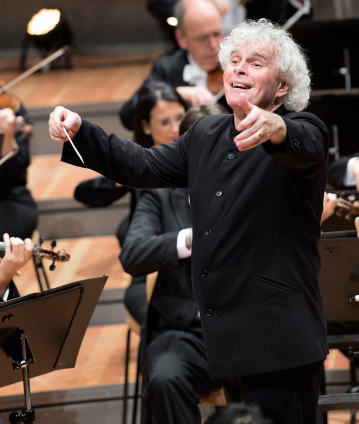Simon Rattle dirige les Symphonies n° 4 et n° 7 de Beethoven

Robert Schumann comparait la Quatrième de Beethoven à une « svelte fille de la Grèce entre deux géants du Nord ». Mais la demoiselle, loin d’être inoffensive, fait preuve au contraire d’un humour mordant. Ce même humour réapparaît sous une forme intensifiée dans la Septième, animée d’une énergie presque maniaque. L’œuvre n’est pourtant pas exempte de mélancolie, comme en témoigne le fameux Allegretto comparable à une marche funèbre.
Berliner Philharmoniker
Sir Simon Rattle
© 2015 Berlin Phil Media GmbH
Artistes
Nos suggestions
- Quatrième concert du cycle Brahms/Schumann avec Simon Rattle
- Simon Rattle et Christian Gerhaher
- Simon Rattle dirige les Symphonies n° 2 et n° 5 de Beethoven
- Concert festif « Les 50 ans de la Philharmonie de Berlin »
- Simon Rattle dirige des musiques de film à la Waldbühne
- Simon Rattle dirige les Symphonies n° 6 et n° 8 de Beethoven